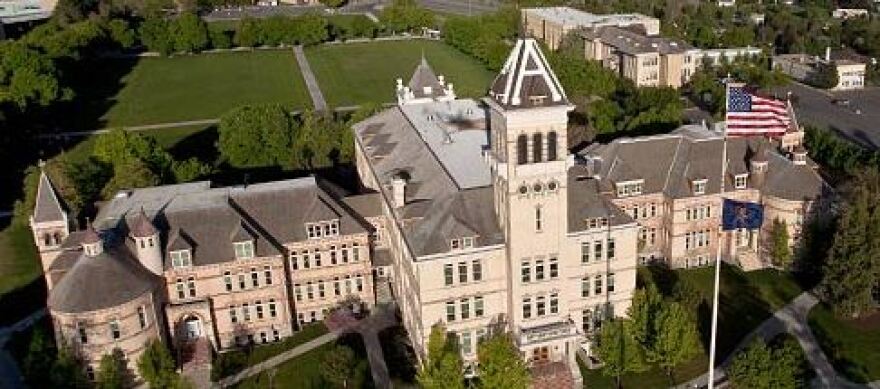Higher education dropped out of the Utah Foundation’s survey of voter concerns over the past couple of election cycles, but it turned up again in its 2012 poll. It’s risen to the 6th position in the ranking of top ten issues identified by the Utah Priorities Project.
Utah’s economy appears to be pulling itself out of the doldrums, thanks in part to a number of high-tech companies choosing to locate or expand here. Salt Lake Chamber executive Natalie Gochnour was excited in June when the U-S Chamber of Commerce pointed to Utah one of America’s fastest-growing economies.
“We’re ranking very high in terms of the engineering, science, other technical occupations, job growth in our state,” she said. “3rd fastest growing economy in the nation, with job growth in excess of 2%, where we have a national economy that can’t quite hit the 1% level.
Making sure those businesses can find the educated people they need to fill new jobs is the reason Utah’s governor set a goal of having 66-percent of the population holding some kind of post-secondary degree or certificate by 2020. Steve Kroes, the president of the Utah Foundation, says students see the opportunity and they’ve been enrolling in record numbers.
“Since 2008, when the recession hit Utah,” Kroes tells KUER, ”many, many young people have gone back to college and university in these recent years, and so enrollments have surged in these colleges while spending has gone down."
Enrollment in Utah’s public colleges and universities grew by 38% from 2000 through 2011, even as state spending on higher education dropped by about 16%. Schools have tried to make up some of that loss with higher tuition. Salt Lake Community College charges 94% more than it did in 2001. Tuition at the University of Utah is 147% higher. At Southern Utah University, it’s 189% more. Over the same period, public colleges around the country increased their tuition only about 26%.
One result of that increased cost is a growing reliance on loans and other financial aid. Utah students use Pell Grants, subsidized federal loans, work study and other programs to help pay their way. But 44% are leaving school with some form of student loan debt, averaging about $15,000. While that’s considerably less than many other states, Steve Kroes says that burden of debt is likely to be a drag on Utah’s economy in the future.
“And looking out at the next 20 years or so,” Kroes reflected,” many of those young people graduating from college and getting their career jobs are going to be saddled with hundreds of dollars a month in student loan payments that there is no way around, that there is no relief from. I’m certain it will reduce the amount they can spend on rent or eventually on a home purchase or on cars and other things that help to benefit economic growth.
Dave Buhler, Utah’s new Commissioner of Higher Education, is concerned about that increased cost keeping students from finishing their college training once they start, but he’s seeing a couple of positive trends.
Buhler told KUER, “I’m very encouraged by a couple of efforts by the business community over the past couple of years to really push for greater state support for both public and higher education. I’m speaking of Prosperity 2020 and also a group called Education First, which has been working to encourage candidates to support education as a top priority.”
Buhler points out taxpayers were subsidizing about 75% of each student’s education at Utah’s public colleges earlier in this decade. But after the recession and cuts in state support, it’s closer to 50%, with students making up much of the difference through higher tuition.
Utah Foundation issue brief on higher education


